When it comes to identifying good pets for teens and tweens, options abound. From cuddly creatures like dogs, hamsters, and guinea pigs to unique reptiles such as snakes, leopard geckos, and turtles, the right pet can provide more than just companionship.
Pets offer a comforting and consistent presence, making them particularly beneficial for teens and tweens. They serve as more than mere companions; they become an integral part of the journey toward responsibility and compassion. However, not all teens and tweens may be ready for the commitment that comes with owning a dog or cat.
In this comprehensive guide, we will explore the myriad benefits that pets can bring to the lives of teens and tweens. We will delve into important considerations when choosing a pet and provide a carefully curated list of the best pets for young individuals. After reading, you’ll be well-equipped to choose the pet that will best complement the lifestyle and personality of your teen or tween.
- Why Pets are Beneficial for Teens & Tweens
- Factors to Consider When Choosing a Pet for a Teen or Tween
- The Best Pets for Teens & Tweens
- Cool Pets For Teens
- Easy Pets For Teens
- Small Pets For Teens
- Cute Pets For Teens
- Pets For Beginners
- Good Starter Pets For 10-Year-Olds
- Good Starter Pets For 11-Year-Olds
- Great Pets For 12 Year Old
- Related Pet Questions
Why Pets are Beneficial for Teens & Tweens

Pets have a significant positive impact on the lives of teens and tweens. According to the American Psychological Association, owning a pet can enhance emotional well-being, promote physical health, and encourage social interaction.
These benefits are particularly impactful during adolescence, a critical period of emotional and psychological development.
Emotional Benefits: Pets provide unconditional love, which can improve mood and lower stress levels. They are always there, providing comfort in times of loneliness or sadness.
Physical Benefits: Having a pet encourages regular exercise, especially with dogs that need walking. This can foster a healthier lifestyle.
Psychological Benefits: Pets can provide a sense of purpose and responsibility, important traits for personal development in this age group.
Factors to Consider When Choosing a Pet for a Teen or Tween
Choosing the right pet requires careful thought, as pets can vary greatly in terms of their care needs, lifespan, and behavior. Key factors to consider include:
1. Personality of the Pet and Child
Animal temperament is also important to keep in mind when deciding what pet to adopt. Some pets may be needy, and others are not affectionate or cuddly. So to ensure that your kids have a great pet experience, know what they like first and then proceed with the adoption process.
2. Family Lifestyle
Getting a pet will disrupt your family’s lifestyle and daily routine. If your family is laid back and relaxed, getting a pet with a jumpy personality can be pretty hard to adapt to. The opposite also applies.
3. Living Conditions
The living environment should be suitable for the pet. Larger pets require more space, while others may need specific environmental conditions. For instance, a Mastiff requires a large living area because it is significant. On the other hand, a bird will need just a small space to set up a cage or birdhouse.
4. Cost of Maintenance
The costs for feeding a pet and veterinary visits could amount to hundreds of dollars each year. In the first year mainly, maintenance and adoption fees alone can sum up to $2500. Not to mention other additional costs such as; vaccination, grooming, toys, and insurance.
5. Time and Commitment
Money is not the only thing you have to be able to spend when you go get a pet; you will have to spend your time too. The amount of time the family and teen can commit to the pet’s care should be considered. On average, dogs must be taken outside to poop and pee at least twice daily, and need to exercise daily as well. So if you do not have that much time to spare, you should get a fish or a lizard pet instead.
6. Hygiene
For those pets that have to be taken out on walks, there is a high chance that they will track mud, dirt, and ticks into the house. Cats and dogs will shed all over your carpet, floor, and couch. Therefore, these pets may not be the best if your kid is allergic to fur.
7. Allergies and Health Issues
It’s essential to check if anyone in the family is allergic to the pet. [Allergy & Asthma Network](https://www.allergyasthmanetwork.org/what-is-allergy/overview/living-with-pet-allergies/) provides some useful guidance on living with pet allergies.
8. Adjustment Process
Introducing a pet to your life will require a couple of days, weeks, or even months to adapt. So you must set up certain perimeters, such as the playpen, toys, and feeding area, in advance. You may even have to follow a particular feeding and cleaning routine.
Choosing the right pet can help ensure a rewarding experience for both the pet and the teen or tween. It allows for a strong bond to develop, which can greatly enhance the teen’s or tween’s emotional, physical, and psychological well-being.
The Best Pets for Teens & Tweens
When it comes to choosing pets, certain animals tend to be more suited to teens and tweens. The following sections will delve into these options.
1. Dogs as Pets for Teens & Tweens

Dog ownership can offer a myriad of benefits for young adults. They offer companionship, teach responsibility, and can even improve physical health through regular walks or playtime. There are also a wide variety of dog breeds to choose from, so your family can find one that fits what you are all looking for in a pet. The ASPCA provides helpful guidelines on dog care.
Benefits: Dogs are known for their loyalty and affection. They can provide emotional support, companionship, and even security.
Suitable Breeds: Breeds such as the Labrador Retriever, Beagle, or Cavalier King Charles Spaniel are often well-suited for teens due to their friendly nature and adaptability.
Care Requirements: Dogs require regular exercise, grooming, and a balanced diet. Regular veterinary check-ups are also essential.
2. Cats as Pets for Teens & Tweens
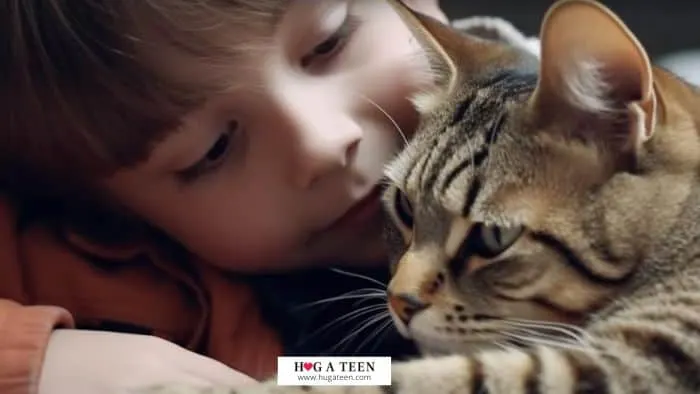
Cats make excellent pets for those looking for a lower-maintenance companion. They are generally more independent than dogs but can still form deep bonds with their owners.
Benefits: Cats can offer comfort, companionship, and entertainment. They can also provide a sense of purpose and help teens develop empathy.
Suitable Breeds: Breeds such as the Domestic Shorthair, Maine Coon, or Siamese can be ideal choices due to their affable natures and ease of care.
Care Requirements: Cats require a balanced diet, routine veterinary care, and mental stimulation. They typically require less physical exercise than dogs.
3. Small Mammals as Pets for Teens & Tweens
Small mammals such as rabbits, guinea pigs, or hamsters can also make great pets. These adorable animals are often quieter and lower maintenance than dogs or cats.
Benefits and Challenges: Small mammals can teach teens about responsibility and care. However, they may not interact in the same way as larger pets.
Care Requirements: Depending on the specific animal, care might include regular feeding, cage cleaning, and providing mental stimulation.
4. Fishes and Reptiles as Pets for Teens & Tweens
Fish and reptiles can be fascinating pets that require relatively low interaction.
Benefits and Challenges: These pets can help teens learn about different types of animals and their care. However, some reptiles and fish require specific habitats and diets.
Care Requirements: Care varies significantly among species, and some might need specialized care. This might include maintaining a clean and appropriate environment, feeding a specialized diet, and monitoring for health issues. The water quality of your fish’s tank is also essential to their well-being, so it’s important to check this at least once a week and change the water every two to four weeks.
5. Birds as Pets for Teens & Tweens
Birds can be vibrant and social pets, making them an appealing choice for many families.
Benefits and Challenges: Birds can provide companionship and entertainment, and caring for them can teach responsibility. However, some bird species can be quite noisy or require significant social interaction.
Care Requirements: Birds generally require a balanced diet, social interaction, mental stimulation, and regular veterinary care.
By considering these options and the unique needs of each type of pet, families can make a well-informed decision when choosing a pet for their teen or tween.
Cool Pets For Teens
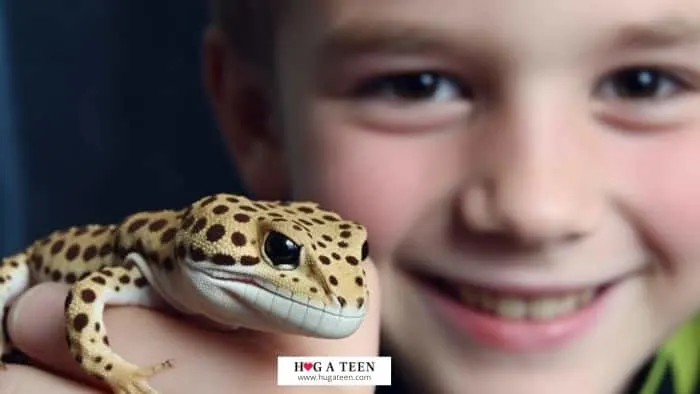
1. Cockatiel
These pet birds are playful, friendly, and pleasant to watch. Cockatiels can mimic speech. Of all the parrot breeds, they are easier to tame. These birds are docile and tend to be very gentle.
Pros
- Naturally affectionate
- Enjoy being petted
Cons
- They may get annoyingly loud
- Daunting to clean up after them
2. Lizards
Lizards make suitable pets for teenagers because they look fascinating. The commonly owned pet lizard is a chameleon. They feed on small insects. It does not require as ample a space as its habitat.
Pros
- Small and cuddly
- They are friendly
Cons
- Difficult to find a lizard specialist
- Cannot survive in icy environments
3. Crested Geckos
They are small pets that do not require much maintenance, so they are the best fit for 10-year-olds. They need an appropriately sized tank and temperature-controlled environment and lighting. Crested Geckos are great to observe and learn from for kids.
Pros
- Gentle to caretakers
- Simple diet
Cons
- Too sensitive to heat
- Can become aggressive
4. Leopard Geckos
It would be best if you had extensive research to know how to care for Leopard Geckos. With enough effort and time, they are pleasant animals to keep as pets. Leopard geckos are of different patterns and colors.
Pros
- These reptiles are easy to tame
- They are appealing to watch
Cons
- Specific diet
- Strict light exposure
5. Madagascar Hissing Cockroach
Petting a Madagascar hissing cockroach can be pretty interesting for a teenager. They are great for people with a small living space.
Pros
- Great for observation purposes
- Easy to handle
Cons
- Vulnerable when molting
- Requires a proper permit to keep
Easy Pets For Teens
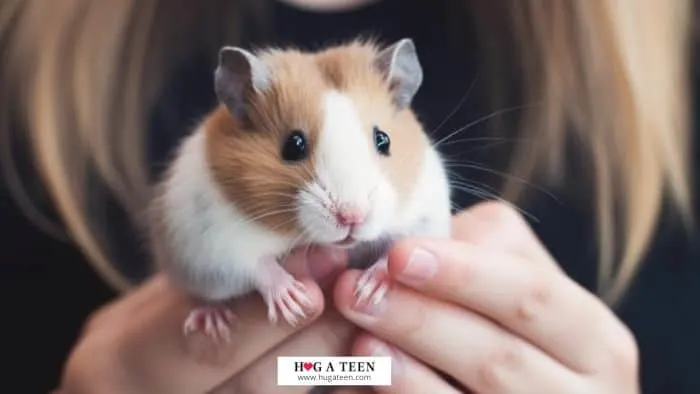
1. Hamsters
They are sweet and fun to watch. Hamsters are more suitable for teenagers and are calm. They do not need to be taken out for walks. Hamsters make little to no noise.
Pros
- Small and cool
- Hamsters are quiet creatures
Cons
- Mostly active at night
- Have a short life span of about 2 to 4 years
2. Guinea Pigs
These are affectionate and easygoing pets. Guinea pigs can learn tricks quickly and are pretty intelligent. They are cute and have a longer life span compared to other rodents. They are very social creatures that crave attention from their owners and will do best in pairs or small groups.
Pros
- Sociable: Guinea pigs are friendly and sociable creatures, and they enjoy spending time with their owners.
- Easy to Handle: They are a good size for handling, not prone to biting, and usually tolerate gentle handling well.
Cons:
- Require Space: Guinea pigs need more space than other small animals. A small cage won’t do; they need room to roam.
- Lifespan: Guinea pigs can live up to 7 years or more with proper care, which is longer than many other small pets.
Small Pets For Teens
1. Fish
Freshwater fish are the best to keep as pets. They have a long life span but only if well taken care of. A great example is a goldfish, guppies, and neon tetras. Saltwater fish are also excellent small pets to keep.
Pros
- Aesthetically pleasing
- Fish are small and quiet
Cons
- Can’t cuddle with fish
- Maintaining an aquarium is expensive
2. Birds
Birds are colorful and amusing for your teenagers to watch. You can keep bird species as pets, Cockatoo, Parakeets, Parrotlets, and Cockatoo. Birds can keep your teenagers engaged.
Pros
- Beautiful to watch
- They are comforting when you are alone
Cons
- Birds tend to be noisy and messy
- They tend to get sickly
Cute Pets For Teens
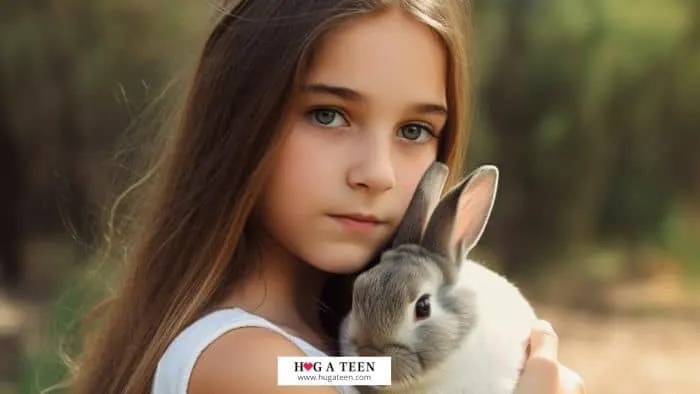
1. Rabbits
These are very adorable and lovable animals. Rabbits, commonly referred to as ‘bunnies,’ are easy to look after. It is an added advantage if you have a yard or lawn in your compound where your tween can play with the rabbit.
Pros
- Cute, harmless, and easy to tame
- They are fun to play with
Cons
- A lot of odor may come from excretion
- They may not get along with dogs and cats
2. Gerbils
Pet gerbils are intelligent and cute. They are friendly and comfortable around people. Gerbils have a short time span of about 2 to 3 years. They are a trusting species. Gerbils are a lively bunch that will keep your kid entertained.
Pros
- They are like cats in that they are self-grooming
- Gerbils don’t require much space
Cons
- They are awake and super active at night
- They may drop their tails at some point
3. Hamsters
Hamsters have a life span of 1 to 3 years. They are active and love to move about. It will be fun for your kid to observe them as they play around in their habitat. Hamsters are sweet and live in cages.
Pros
- Great for learning through observation
- Hamsters don’t make noise
Cons
- They have a short life span of about 2 to 4 years
- Hamsters are not cuddly
Pets For Beginners
As long as there is a lot of adult supervision, you can consider these popular small pets for kids.
1. Mice
Mice live in colonies but are very pleasant when domesticated. They have a short life span. Mice are cute and straightforward pets for beginners. It would be best if you did extensive research on adequately taking care of the different breeds of mice.
Pros
- Relatively easy to take care of
- Contrary to popular belief, mice are clean
Cons
- Small, hence fragile
- Have a short lifespan
2. Goldfish
Pros:
- Low Maintenance: Goldfish are relatively easy to care for. They do not require walks, grooming, or extensive social interaction.
- Educational: Caring for a goldfish can teach beginners about the basics of pet care, including feeding, cleaning, and maintaining an appropriate environment.
Cons:
- Limited Interaction: Goldfish do not provide the same level of companionship or interaction as other pets.
- Lifespan: Despite popular belief, with proper care, goldfish can live up to 10 years or more, so they may be a longer commitment than expected.
3. Bearded Dragons
Pros:
- Temperament: Bearded dragons are generally calm and easy-going. They tolerate handling well and are less likely to bite than some other reptiles.
- Fascinating: They can be very interesting pets, and owning one can be a great conversation starter.
Cons:
- Care Requirements: They have specific habitat requirements. You’ll need to provide a heat source and UV lighting, and their diet can be more complicated than a simple bag of pet food.
- Lifespan: With proper care, bearded dragons can live up to 10-15 years, which is a long-term commitment.
Good Starter Pets For 10-Year-Olds
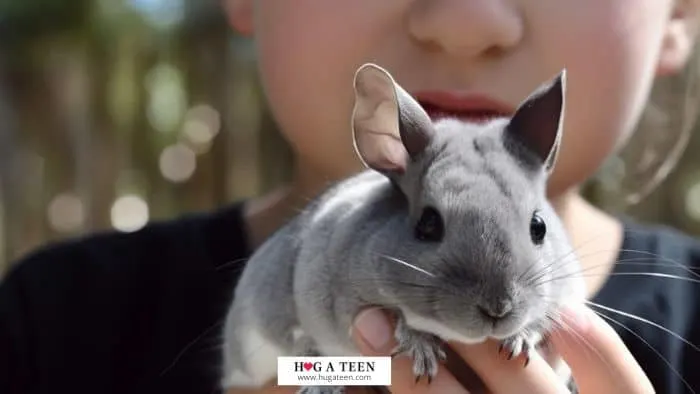
1. Chinchilla
These animals are nocturnal and easy to tame. Chinchillas are calm, cool, and relaxed. They prefer being in warm temperatures. Chinchillas are quiet. They are playful and do not require much maintenance. Chinchillas need to take dust baths 4-5 times a week to remove oil and dirt from their fur and to keep their coats clean. Providing them with a shallow dish of bathing sand means you won’t have to worry about bathing them.
Pros
- Simple and affordable diet of hay and water
- Chinchillas are odorless
- Low-maintenance pet
Cons
- Take long to adjust to new owners
- Prone to dental issues due to their long teeth
2. Rats
Rats are good starter pets for kids because they are gentle and loving. They induce a sense of responsibility whenever your kid takes care of them. Pet rats are cuddly and will make kids feel a lot less lonely. Teenagers would love rats because they are easy to care for and are highly social animals to have around. As well as feeding pellets and small veggies to their pet rats, kids can replenish water, clean the water bottle, and spot-clean the cage.
Pros
- Friendly
- Very affectionate
Cons
- Can get overweight
- Short life span
3. Canaries and Finches
They are perfect for ten-year-olds because they do not need a lot of maintenance. They are fun to watch since finches are highly active. By feeding them and giving them water, they teach kids about responsibility.
Pros
- Very active
- They sing a lot
Cons
- Noisy
- Tend to be messy
Good Starter Pets For 11-Year-Olds
1. Hermit Crabs
They are exotic animals that are interesting to observe. They have a long lifespan and will give your kid ample time to learn from them and study their nature. With proper care, they can live very long lives.
Pros
- Low maintenance
- They intelligent
Cons
- Not sociable
- They smell
2. Brine Shrimp
Brine shrimps aquatic creatures that are easy to care for, especially for 11-year-olds. They are kept in aquariums or fish tanks. Brine shrimps are usually about 1 to 2 centimeters long. They can eat pretty much anything.
Pros
- Fun to observe
- Inexpensive to buy and maintain
Cons
- Regular draining and cleaning of the tank
- Water temperatures need to be monitored closely
Great Pets For 12 Year Old
1. Bearded Dragons
They have an appealing and exciting appearance. They can change their color sometimes. Bearded Dragons have spikes on their triangular-shaped heads that look like a crown. They are small and easy to carry around and play with. Understandably, these high maintenance pets are best once kids have a longer attention span.
Pros
- They need a big cage
- Require a constant balanced diet
- Fun to keep
Cons
- High-maintenance pets
2. Corn Snakes
They are suitable for kids that would like a snake as a pet. They are about 2 to 5 feet long. And have a lifespan of about 5 to 10 years. Corn snakes do not require much maintenance as your kid cares for and feeds them; they get to be knowledgeable on responsibility.
Pros
- They don’t bite
- Easy to handle
Cons
- Require precise temperatures
- Susceptible to respiratory diseases
3. Greek Tortoises
These types of tortoises are small and easy to handle. They are about 5 to 8 inches long. Greek tortoises are particularly gentle. They are suitable for kids who do not do well in noisy environments. It is important to remember that tortoises have a very long lifespan, so this pet would be a long-term commitment.
Pros
- Slow and not jumpy
- Quiet and calm
Cons
- Not affectionate
- Cannot be trained
Related Pet Questions
What pets are good for ADHD?
Mellow, gentle, and quiet pets like lizards and fish are the best for people with ADHD. Loud, jumpy, and aggressive pets such as dogs may overwhelm kids with autism and ADHD. So good pets for such conditions must keep the home cool and calm.
What is the best pet for anxiety?
Fish, Leopard geckos, and other gentle and calm animals are the best pets for people with anxiety. Ideally, you require medication and therapy to reduce anxiety levels. However, having a quiet and cuddly pet, suck as a Greek tortoise, can help keep you calm.
What is the best pet for depression?
A dog is the best animal to have as a pet if you are depressed. Depression often comes as a result of loneliness. A pet dog can keep you company and involved for a couple of hours daily. Dogs can also sense when you are stressed and cuddle with you.
What is the cleanest pet?
Cats are said to be one of the cleanest pets there are. Pet cats naturally groom themselves, and they also do not excrete everywhere. They dig a hole for them to poop. Apart from the fact that they shed fur, they are still quite hygienic pets to keep.
What is the least smelly pet?
Chinchilla is the least smelly pet you can own since they barely take any fluids, so they do not pee a lot. They poop dry and do not contain any odor. So once you clean their habitat, you can no longer worry about any odors.
What is the hardest pet to take care of?
Hedgehogs are the hardest to take care of as a pet because they require precise dietary and temperature requirements. They can simply die if left even for a short time in extreme temperatures.
